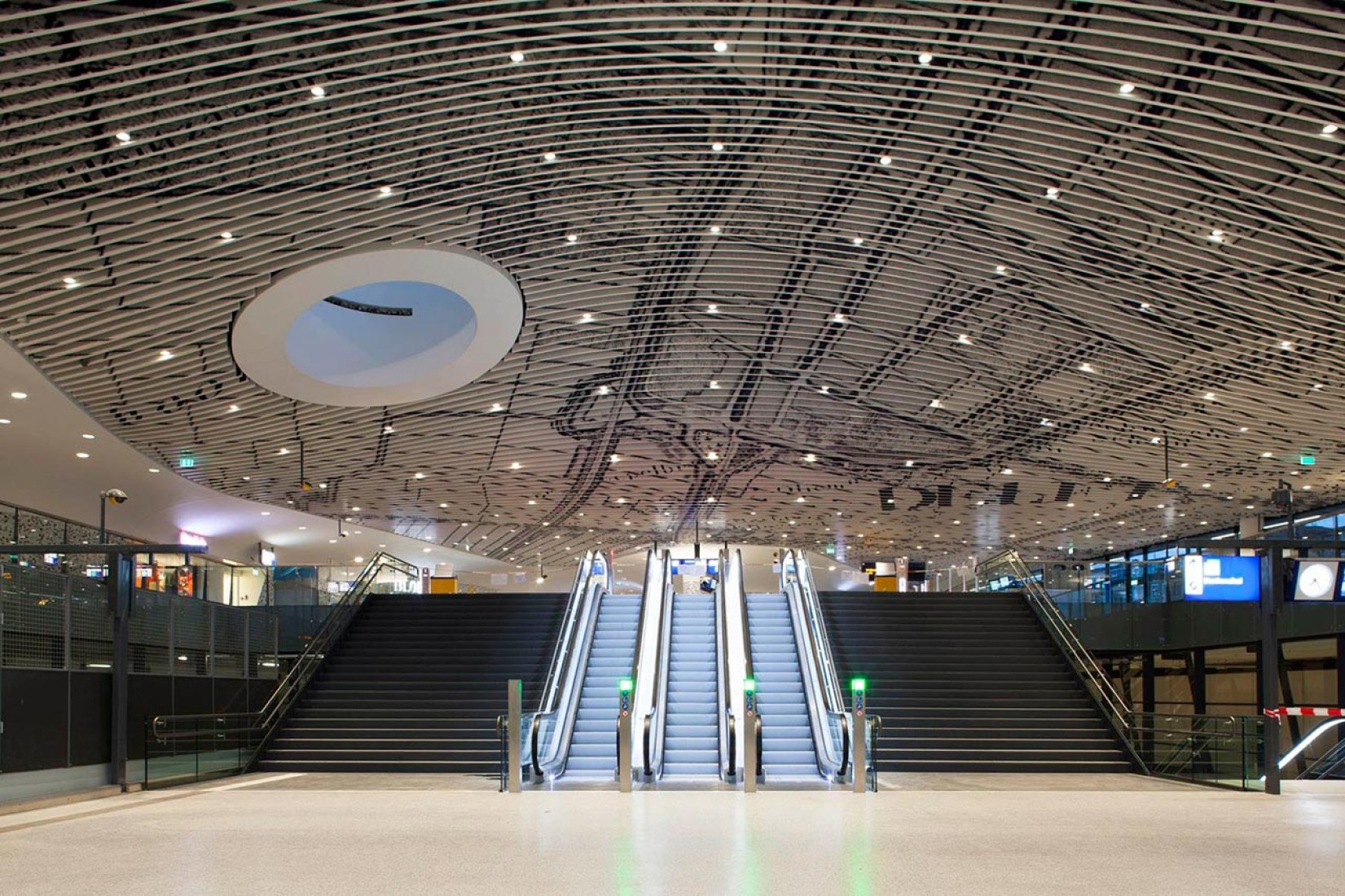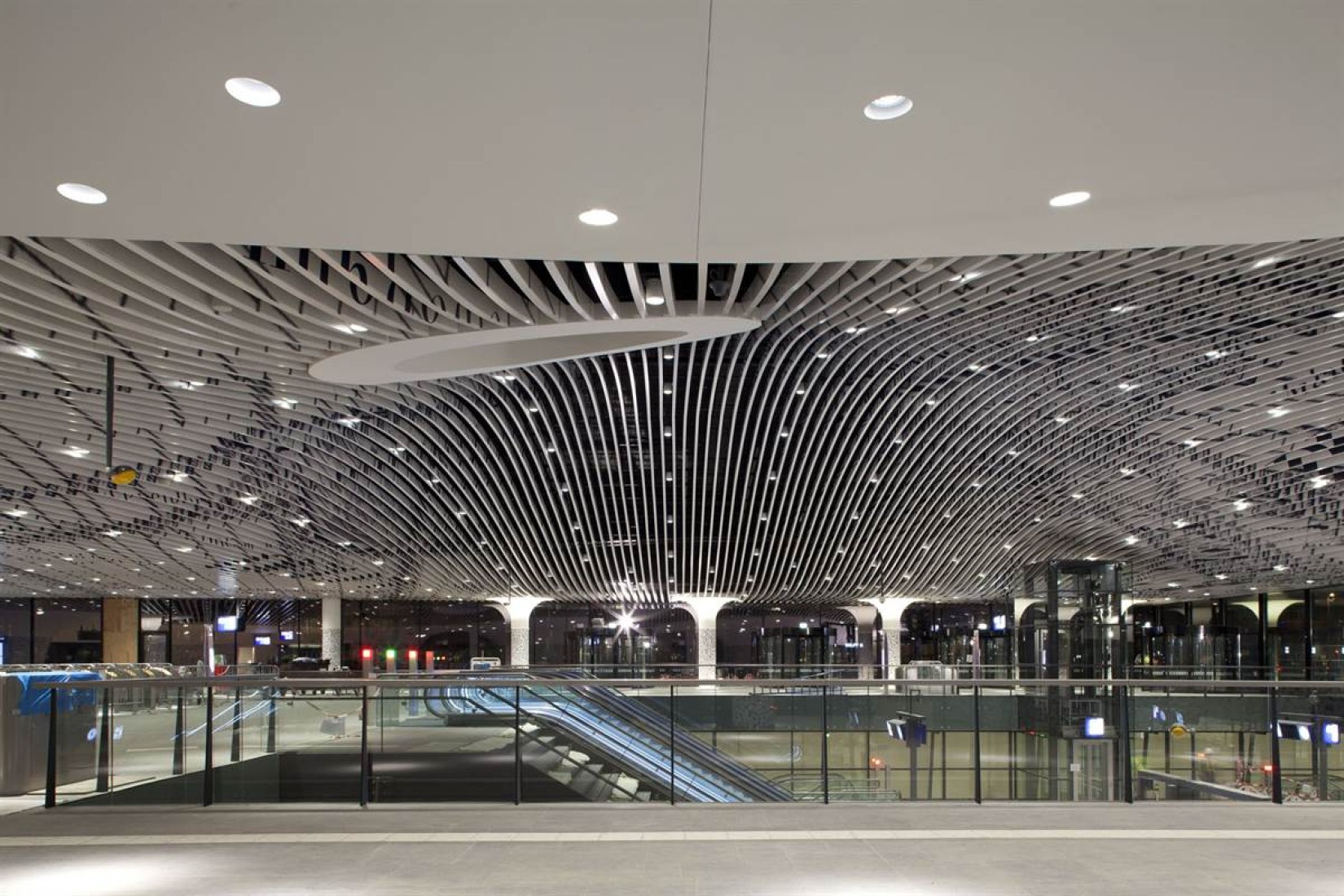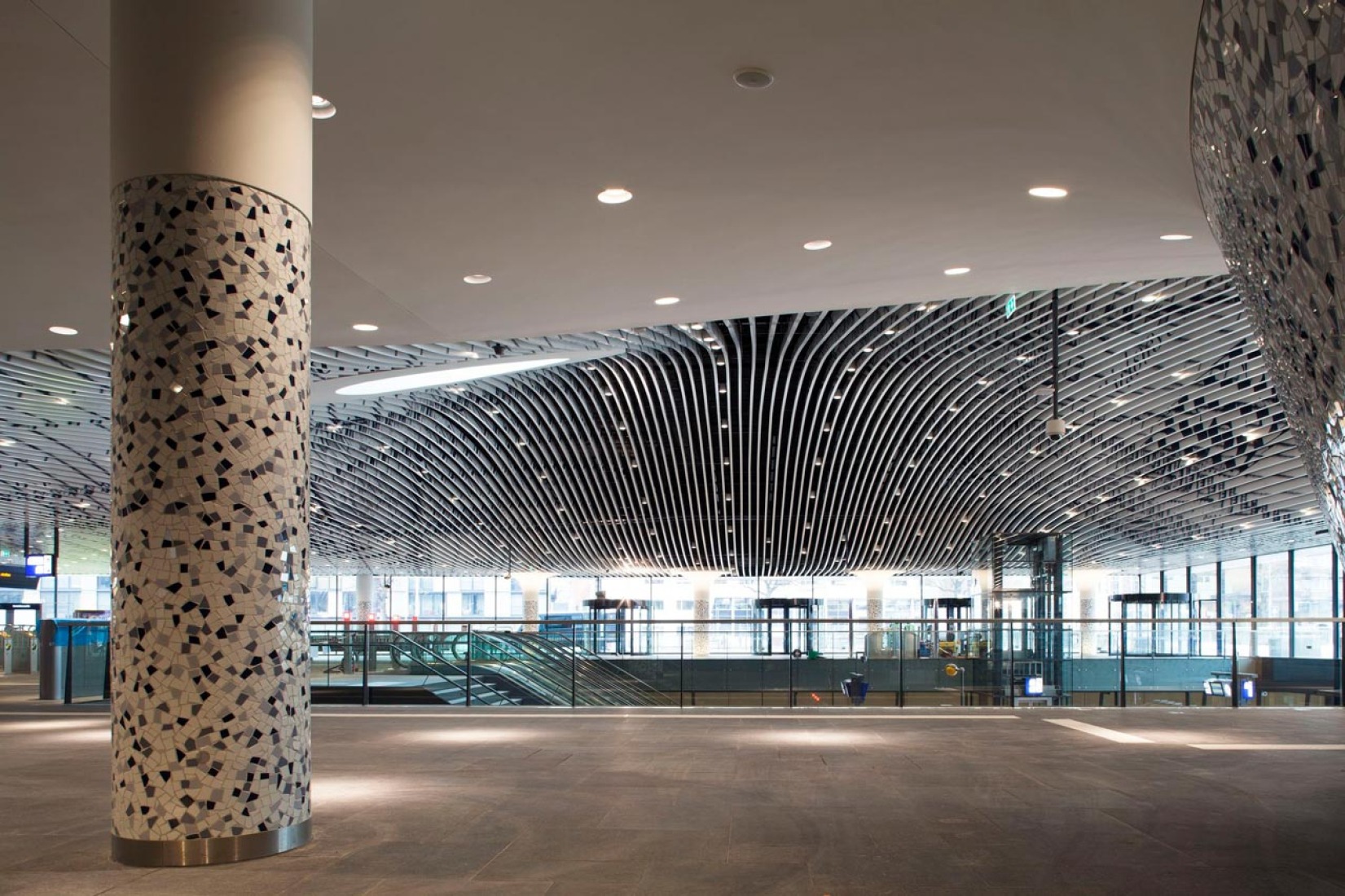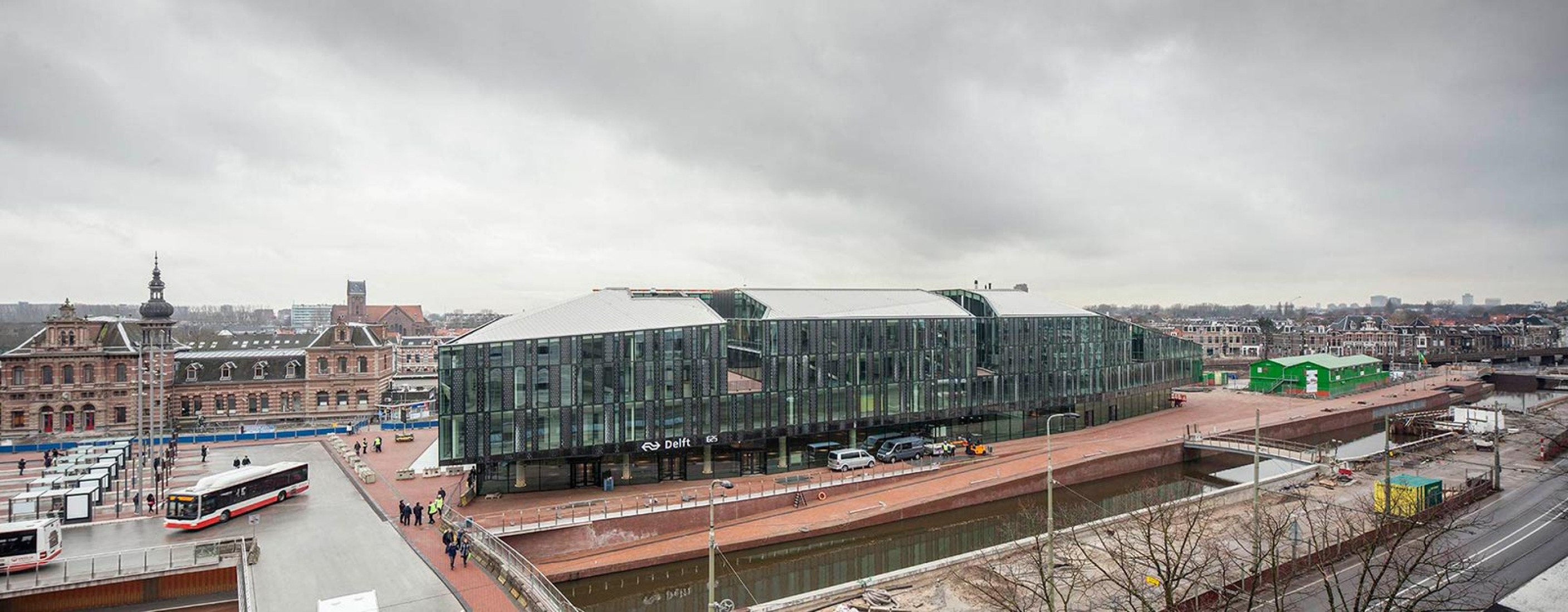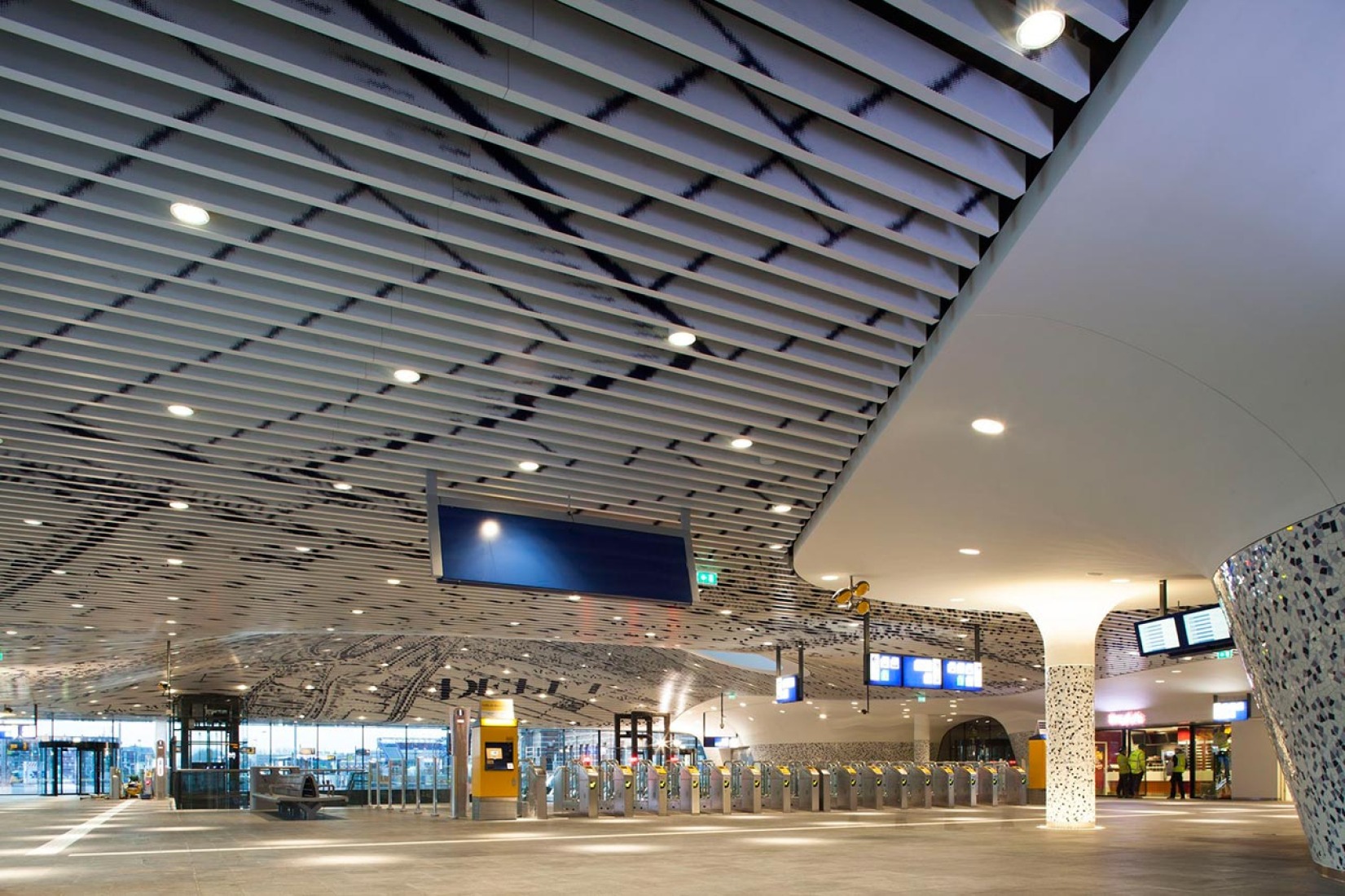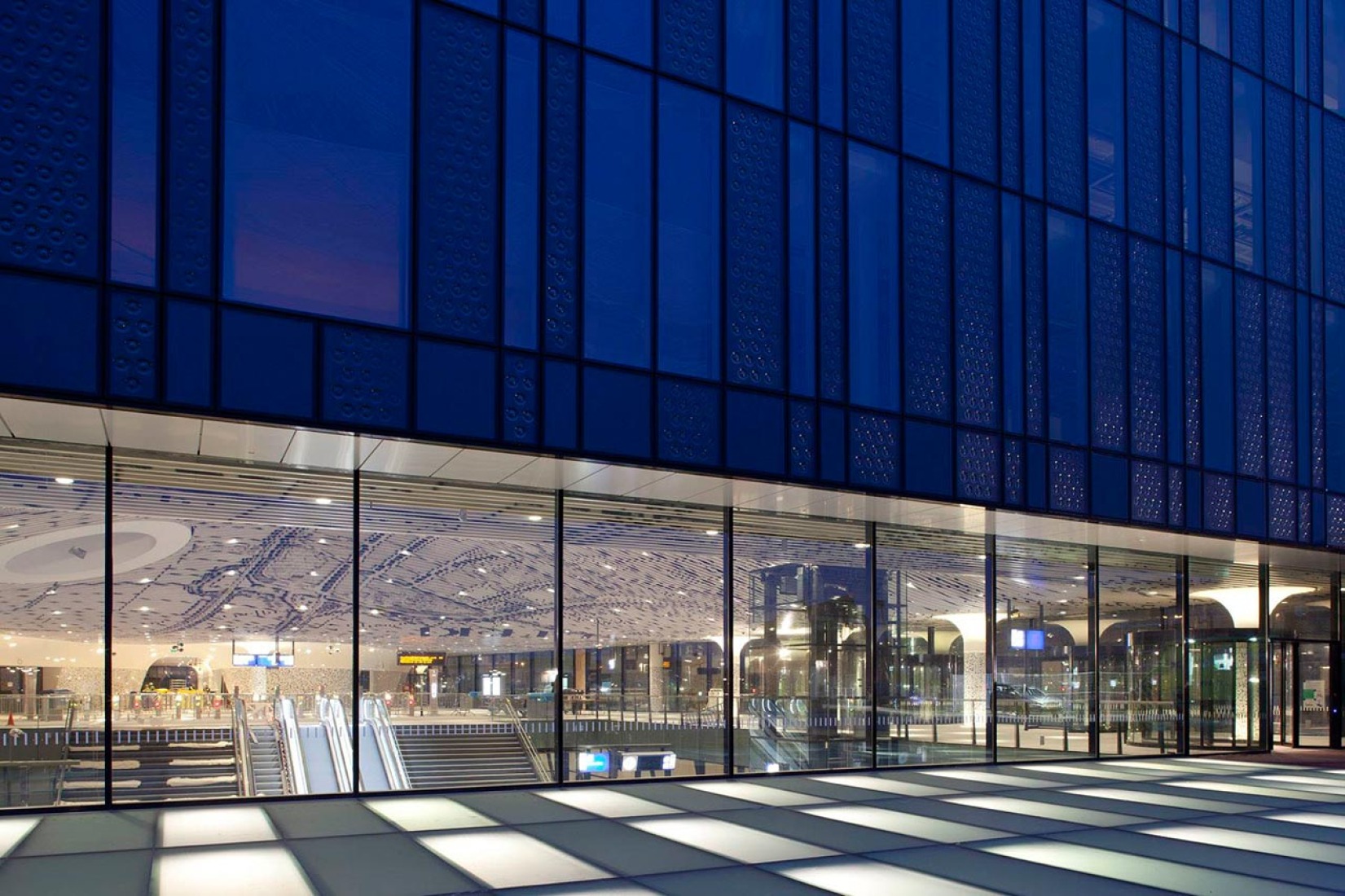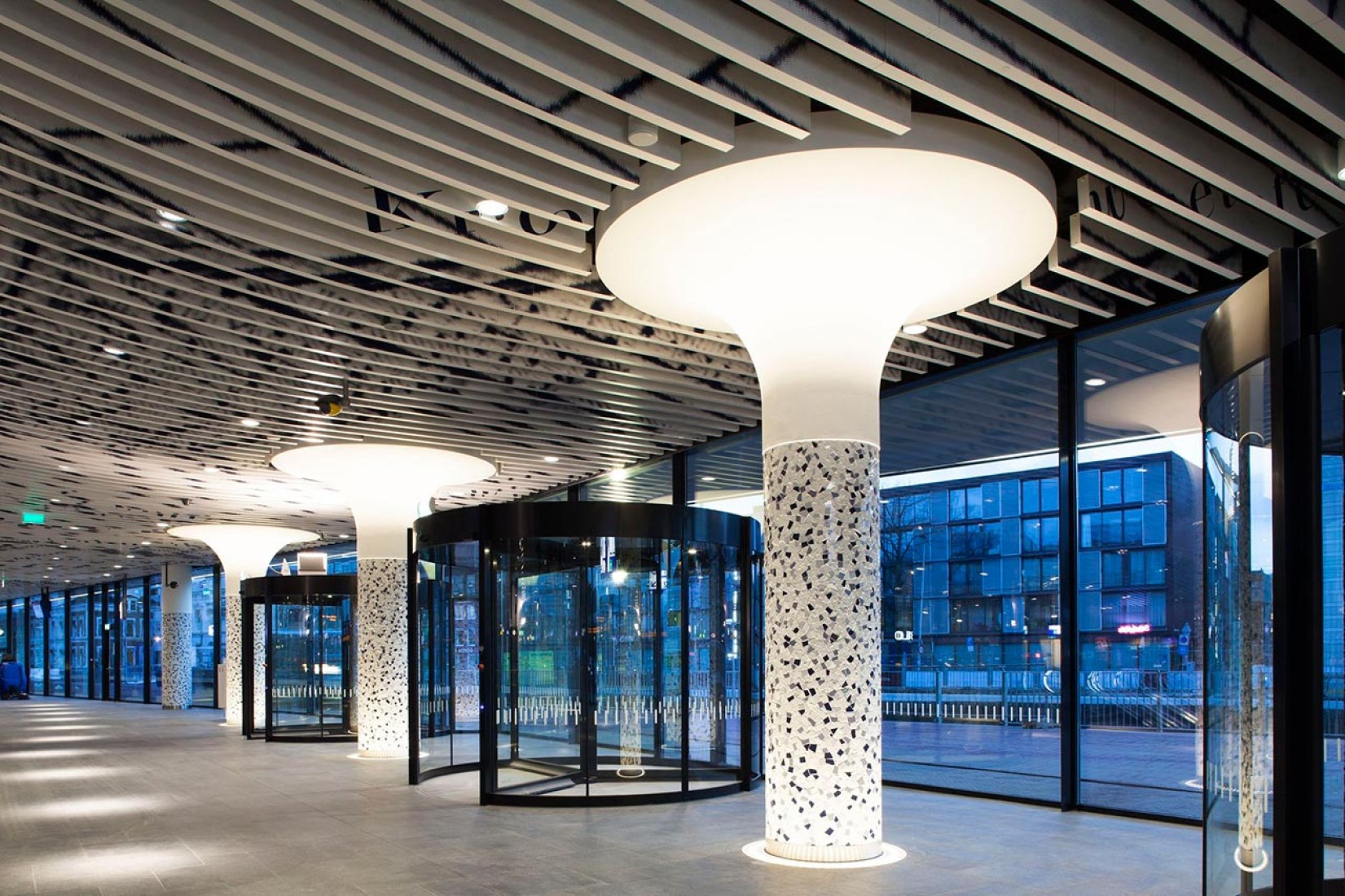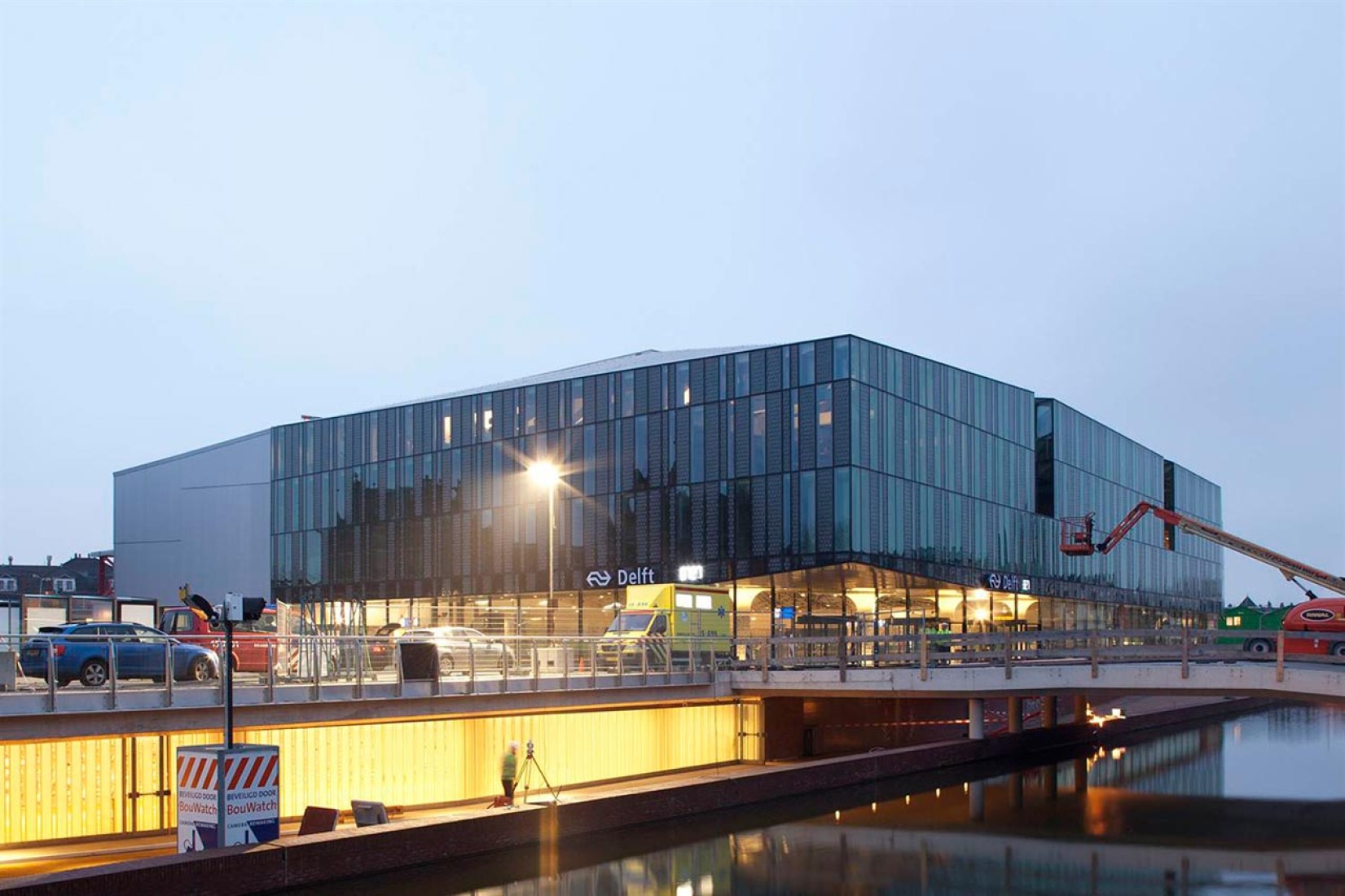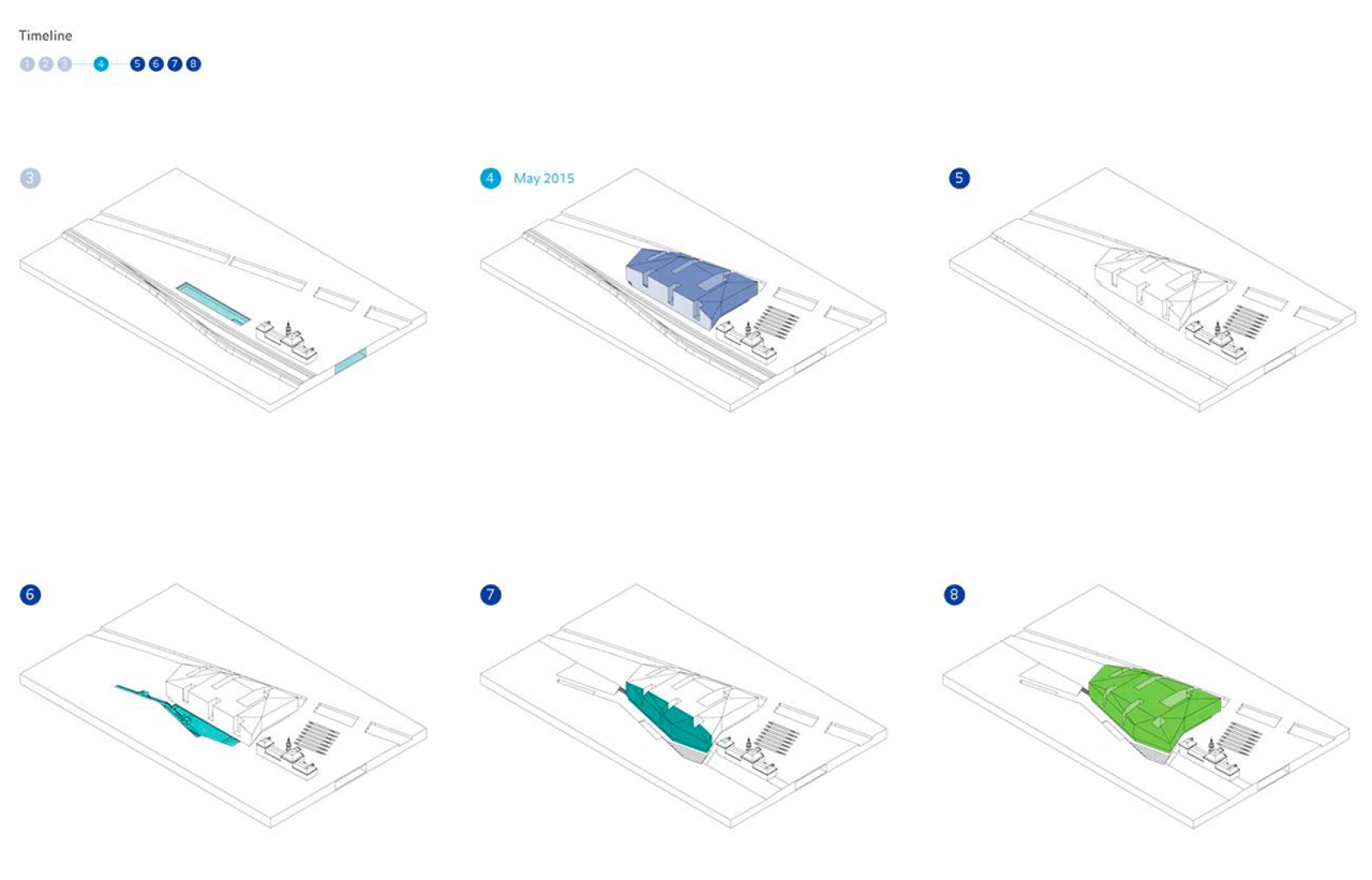Months ago we showed it, as a scoop in METALOCUS, the works near completion, commented by Francine Houben showing the project and explaining the ideas behind the design. “When you arrive at the station, you really experience arriving in Delft,” she says. For instance, the columns and walls are cladded in a reinterpretation of Delft blue, a hand crafted pattern of broken tiles in four shades ranging from dark blue to white.
One of the most eye-catching features is the large vaulted ceiling which shows a map of Delft as it was in 1877. Created together with Geerdes Ontwerpen, the map has been printed on 1929 straight and bended lamellae. Therefore, the visitors’ perception of the image changes continuously as they move through the building, creating a stunning welcoming experience.
Description of the project by Mecanoo
The station hall and municipal offices form a new landmark in Delft. The complex is located above a new underground train station, with the municipal offices accommodating one thousand employees. When the station is operational, the old railway viaduct that divided the inner city of Delft will make way for an extension of the city centre, a park and canal.
Designed without an apparent front or rear, the glass building is compact and flexible. Incisions in the glass volume echo the networked structure of laneways in the historic city and admit daylight deep into the building. Lowering the roof line at the corners reduces the building height to enable a gradual transition to the surrounding buildings.
The use of clear glass at ground level facilitates a close connection between inside and outside. Here, the public zone with the station hall and public lobby is differentiated from the private section with the municipal offices made from transparent and molten glass elements.
A ceiling of curved white horizontal strips adorned with a historic city map in (Delft) blue arches above the public lobby and station hall (in collaboration with Geerdes Ontwerpen). The halls are separated by a glass wall and two volumes that house the public counters, consultation rooms and technical services of the municipal offices, and the commercial functions of the station hall.
The facilities are organised so that travellers can immediately glimpse the historic city from the station hall. Measures including a geothermal heat pump and an optimal facade design featuring highly insulated glazing enable a 35% reduction in energy use from prescribed requirements.
The building accommodates solar panels on the roof that can generate a minimum of 20% of the building’s energy needs.
Text.- Mecanoo.
CREDITS. DATA SHEET.-
Size.- 28,320 m²
Status.- Ongoing 2012 - 2017.
Address.- Stationsplein, Delft, the Netherlands.
Client.- Ontwikkelingsbedrijf Spoorzone; ProRail; Gemeente Delft.
Programme.- Municipal offices with 19,430 m² of offices around internal patios, a bicycle shed, an archive, a loading and unloading area and a public lobby of 2,500 m². The public lobby is visually and physically linked to the station hall of 2,450 m² and has a ticket office and 850 m² of retail facilities and food and beverage.
Awards.- European Centre for Architecture Art Design and Urban Studies GREEN GOOD DESIGN Award 2010.

